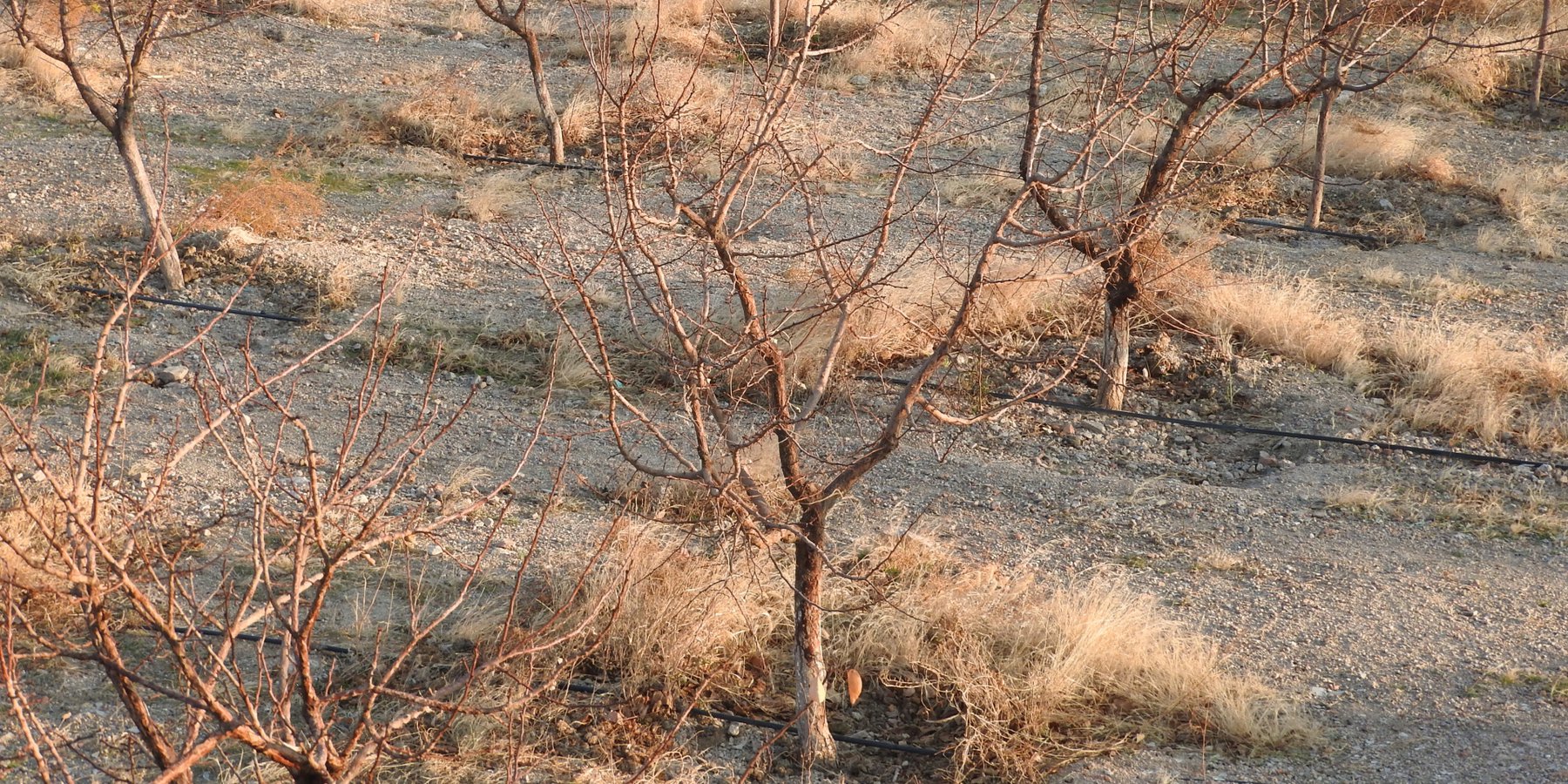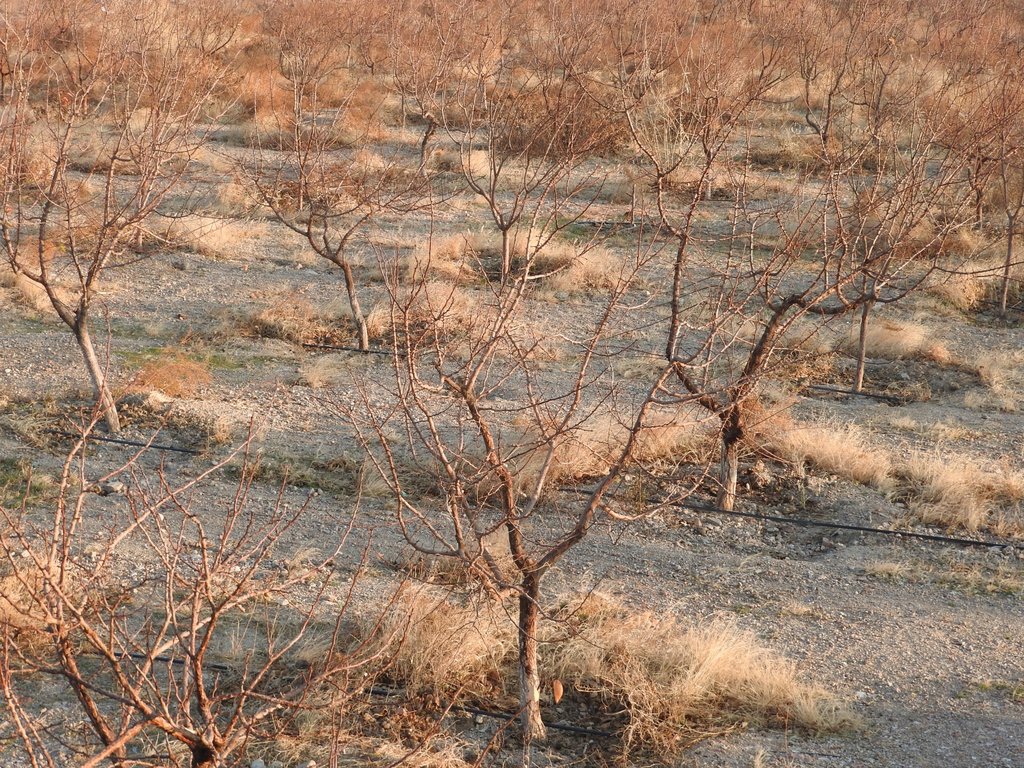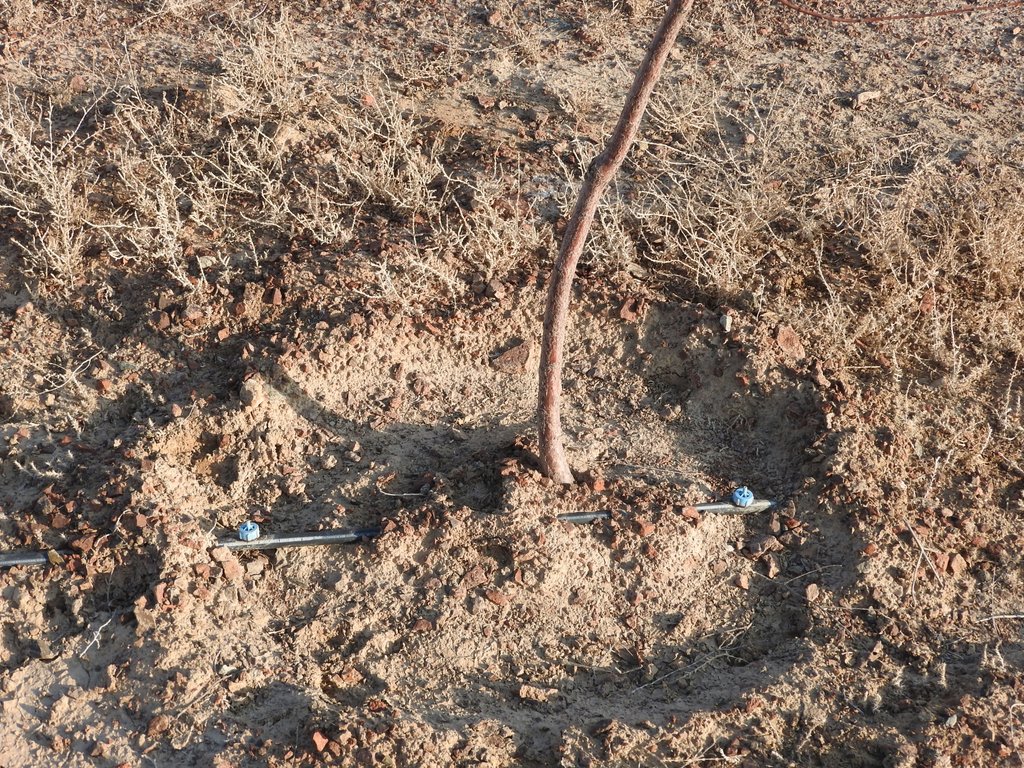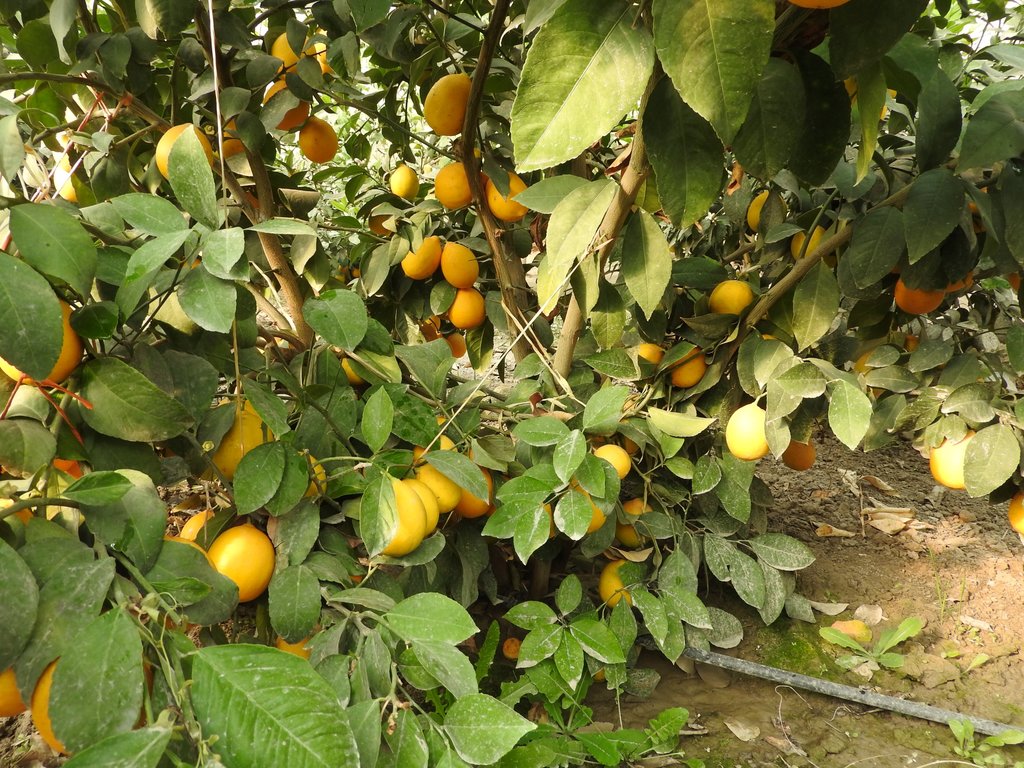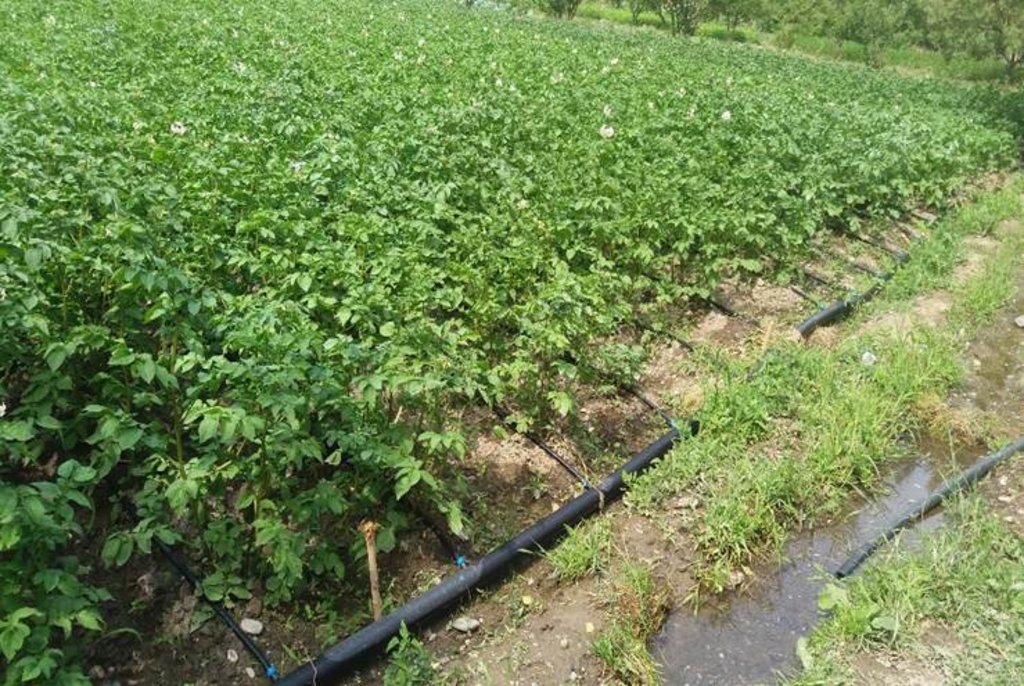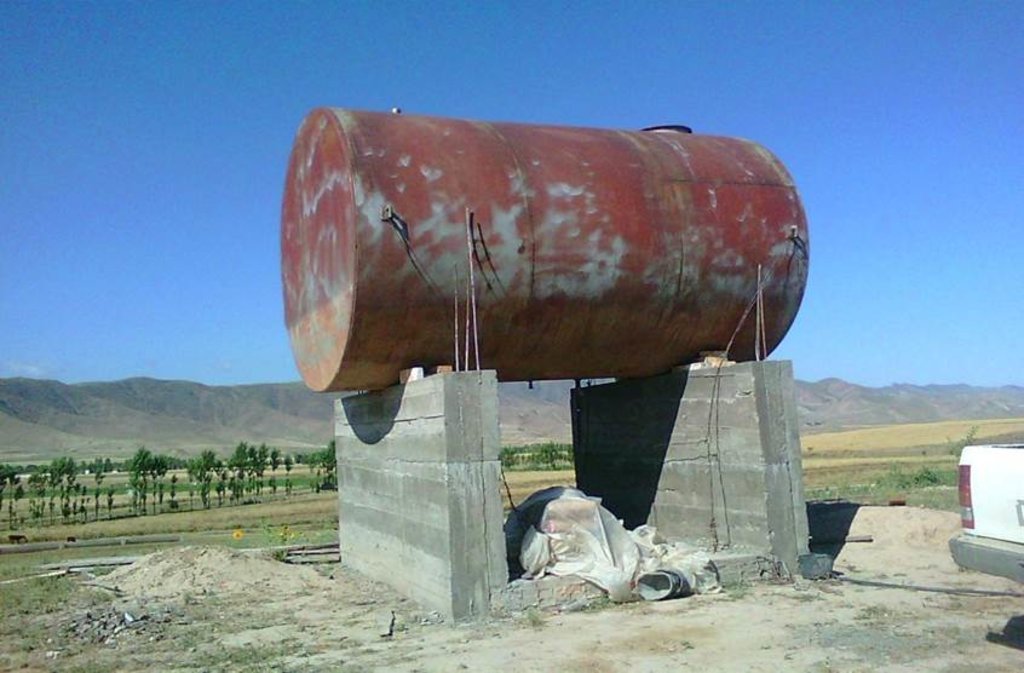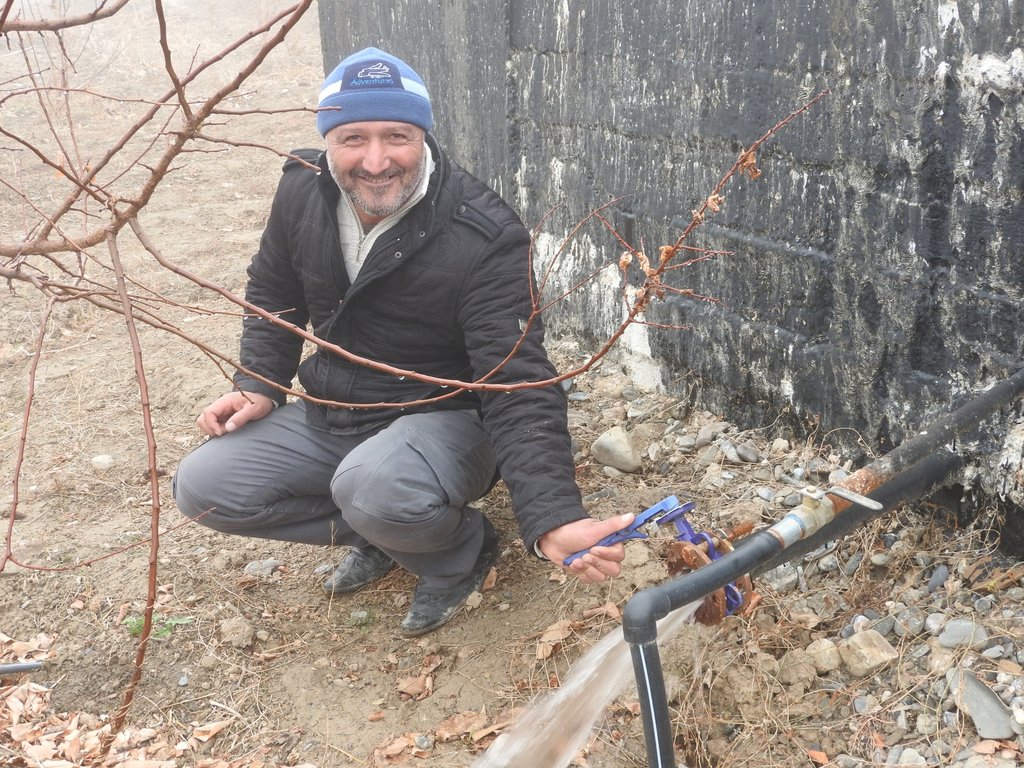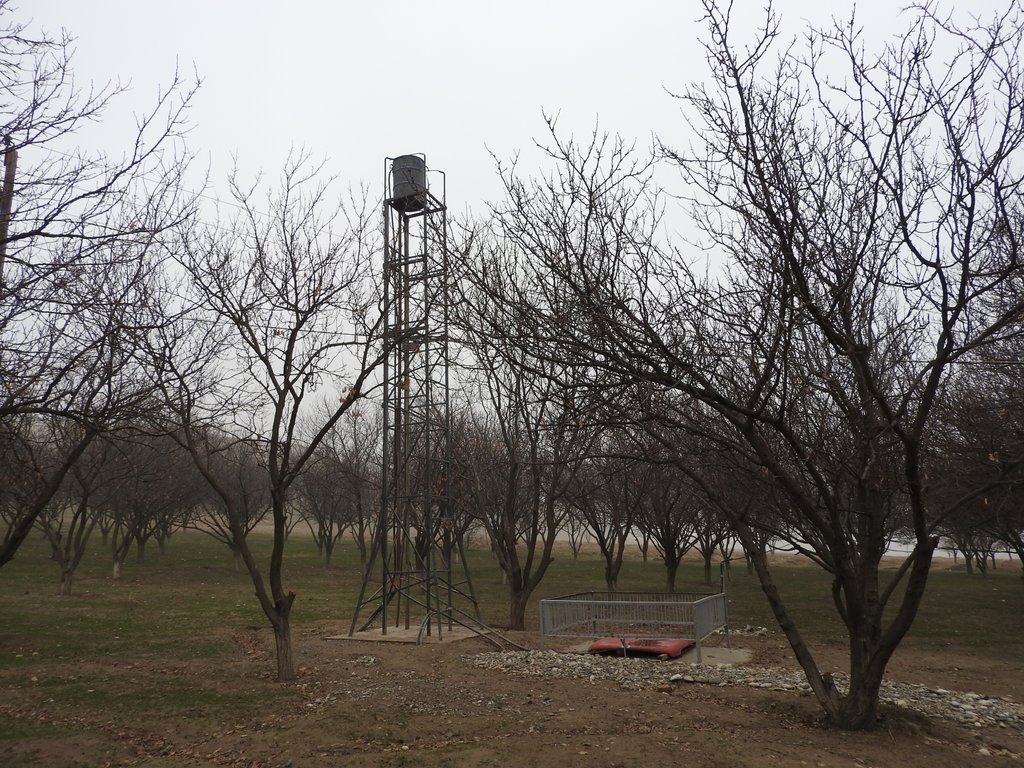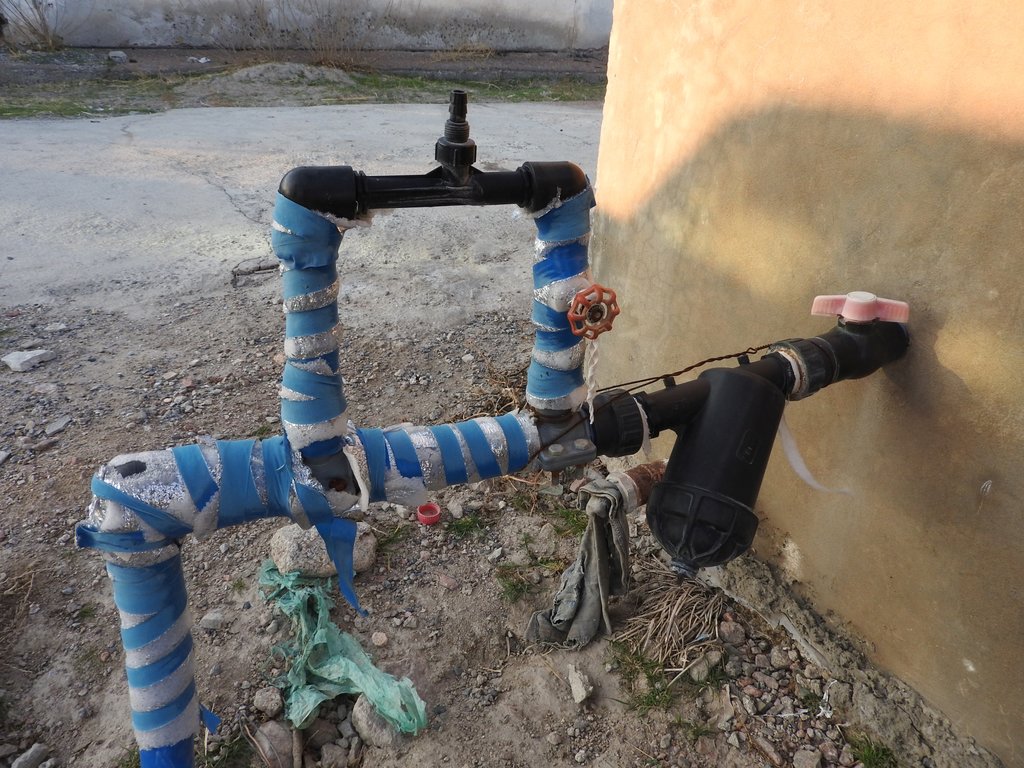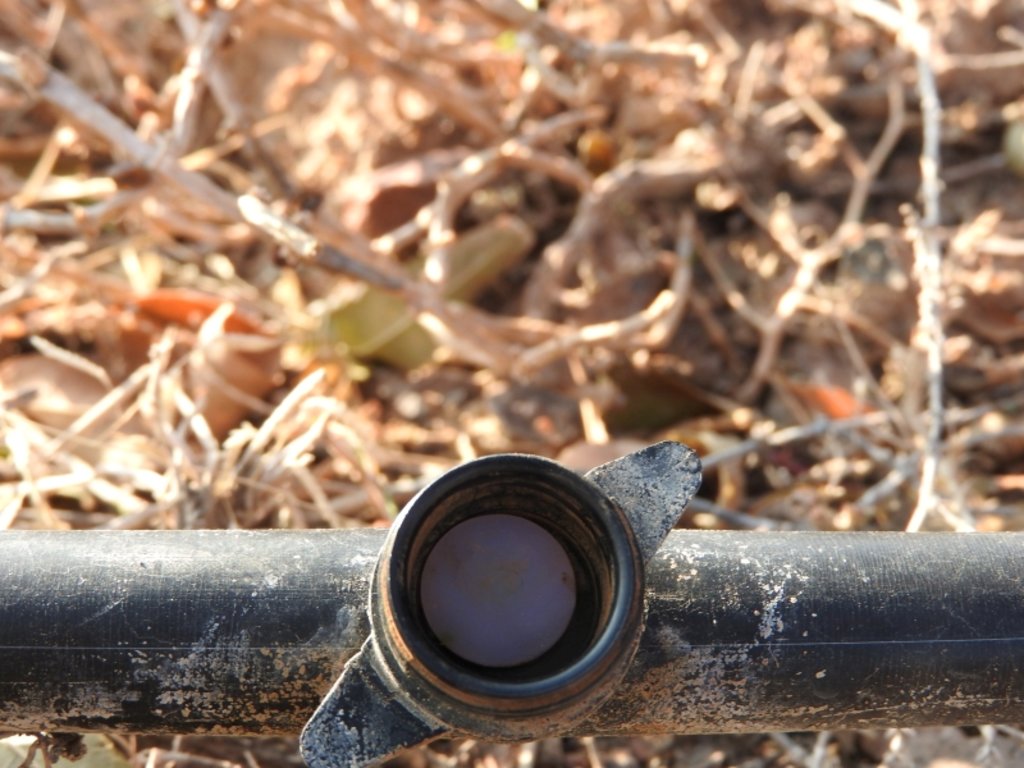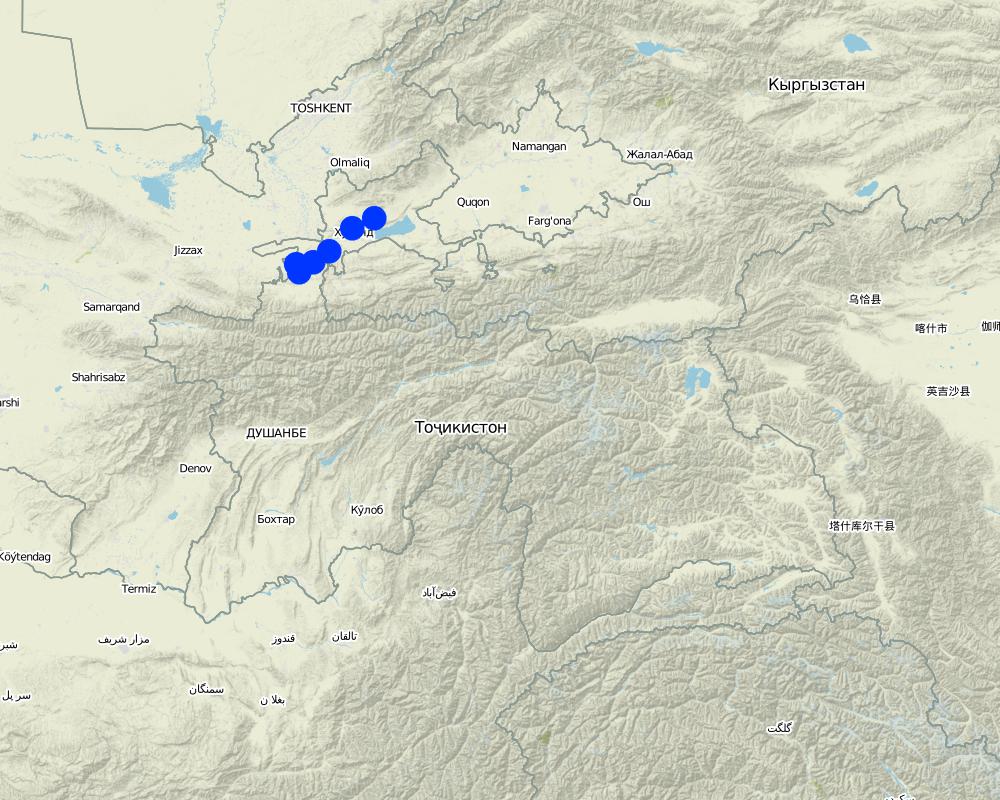Applying drip irrigation for efficient irrigation water use in varying contexts [Tajikistan]
- Creation:
- Update:
- Compiler: Stefan Michel
- Editor: –
- Reviewer: Umed Vahobov
Применение технологии капельного орошения для эффективного использования ирригационной воды
technologies_4307 - Tajikistan
View sections
Expand all Collapse all1. General information
1.2 Contact details of resource persons and institutions involved in the assessment and documentation of the Technology
Key resource person(s)
SLM specialist:
Muhidinov Nodir
Deutsche Gesellschaft für Internationale Zusammenarbeit (GIZ)
Tajikistan
SLM specialist:
Negmatov Negmatjon
Deutsche Gesellschaft für Internationale Zusammenarbeit (GIZ)
Tajikistan
Name of project which facilitated the documentation/ evaluation of the Technology (if relevant)
Strengthening of Livelihoods through Climate Change Adaptation in Kyrgyzstan and TajikistanName of the institution(s) which facilitated the documentation/ evaluation of the Technology (if relevant)
GIZ Tajikistan (GIZ Tajikistan) - Tajikistan1.3 Conditions regarding the use of data documented through WOCAT
The compiler and key resource person(s) accept the conditions regarding the use of data documented through WOCAT:
Ja
1.4 Declaration on sustainability of the described Technology
Is the Technology described here problematic with regard to land degradation, so that it cannot be declared a sustainable land management technology?
Nee
1.5 Reference to Questionnaire(s) on SLM Approaches (documented using WOCAT)
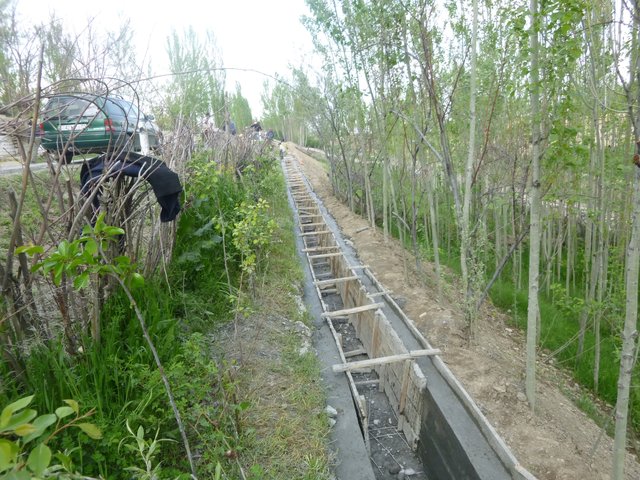
Increased efficiency of irrigation water use to address … [Tajikistan]
Climate change impact contributes to irrigation water shortage. The approach of improving irrigation water delivery, distribution and use prevents irrigation water losses and increases the productivity per amount of irrigation water available.
- Compiler: Stefan Michel
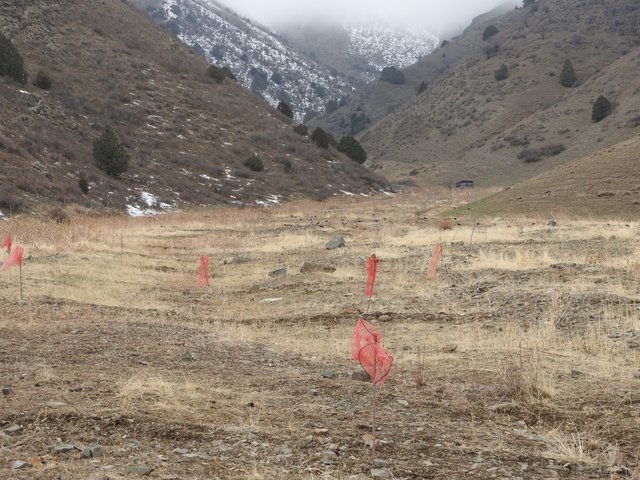
Disaster risk reduction and sustainable land-use by integrated … [Tajikistan]
A site affected by a debris flow was rehabilitated by joint communal work and integrated preventive measures addressing the upper catchment as well as the valley and the debris conus were implemented in collaboration of community, individual farmers, Committee of Emergency Situations and forestry enterprise.
- Compiler: Stefan Michel
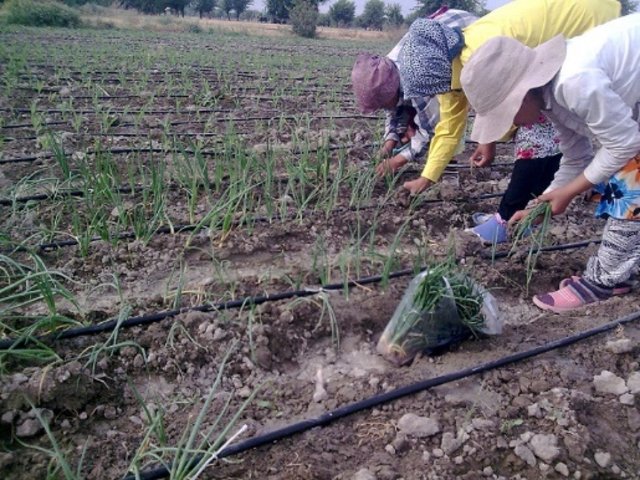
Integrated farming on irrigated lands for adaptation to … [Tajikistan]
Irrigated agriculture faces challenges from climate change impact and growing competition for irrigation water. The approach to get "more crop per drop" reduces the adverse effect of these impacts and improves the income of farmers.
- Compiler: Stefan Michel
2. Description of the SLM Technology
2.1 Short description of the Technology
Definition of the Technology:
Drip irrigation substantially saves water compared to conventional furrow irrigation. Here the technology is applied for different perennial and annual crops and with use of different sources of water.
2.2 Detailed description of the Technology
Description:
In the arid areas of Sughd region cultivation of most crops is possible with irrigation only. In many cases conventional furrow irrigation is limited or impossible due to insufficient availability of irrigation water. Furthermore, conventional furrow irrigation is often connected with problems which make irrigated farming unsustainable – high water demand causes shortages for downstream water users and ecosystems, irrigation water can flush out nutrients from soil or cause erosion, high amounts of irrigation water and insufficient drainage can lead to waterlogging and where soil and/or irrigation water contain high amounts of salt to salinization. From an economic perspective, the high amounts of irrigation water required for conventional irrigation can be costly, especially where pumping from sources to fields at higher elevation is required. Climate change impacts like increasing aridity, changing seasonality of rainfall, reduced storage of precipitation as snow and glacier ice and resulting irrigation water shortages during critical seasons require adaptation in irrigated agriculture.
The broader application of drip irrigation is one way to address economic and environmental issues of irrigated farming, while specifically addressing climate change impact. The major effect of drip irrigation is the increased irrigation water use efficiency – “More crop per drop”. This avoids or reduces the above explained impacts of conventional furrow irrigation: water demand is massively reduced allowing irrigating fields and orchards in areas where water availability would not allow for conventional irrigated agriculture; loss of soil nutrients, irrigation induced erosion and waterlogging are avoided, salinization is much less likely and occurs only in small extent in cases where highly mineralized irrigation water is applied (not an issue in the described project region). The reduced need for irrigation water avoids conflict with downstream water users and the needs of ecosystems. Under climate change impact farmers applying drip irrigation have a higher security that sufficient irrigation water is available and the drip irrigation technology allows for an adapted provision of water to the crops in accordance to their physiological demand. Drip irrigation systems can be used to apply the accurate dosages of fertilizer directly to the plants. This increases the effectiveness of fertilizing and the efficiency in terms of costs as much less fertilizer is not taken by the crops.
Drip irrigation is applied for various crops:
•perennial crops: orchards of apple, apricot, pear and other fruit trees, vineyards, lemons in greenhouses;
•corn, onions, potatoes; and
•honey melon and water melon.
The high initial investment influences on the economic profitability of the technology. The project demonstrated that drip irrigation can be used not only for orchards, where it has an advantage over field crops, because there is no need re-install pipes every season. But it can be used for crops such as melons, onion, sunflower and corn. In the case of honey melon and water melon drip irrigation is particularly efficient due to the large area covered by every single plant. Thus the distances between pipes and between drippers can be large to supply each plant, but the plants with their long tendrils and large leaves effectively use the space in between. In trials of onion cultivation the generally high investment needs, required density of tubes and drippers and the comparably low market price made the technology in not economically competitive under current circumstances.
Drip irrigation can be applied with various sources of irrigation water. Compared to conventional furrow irrigation even low amounts of irrigation water or water from comparably costly sources can be effectively used. In the frame of the documented trials the following sources of irrigation water have been used for supplying drip irrigation systems in addition to water from irrigation canals:
•spring water collection with concrete reservoir;
•water from draw well, pumped to small water tower above the well and from their running by gravitation to concrete reservoir, from where it is supplying the drip irrigation system;
•rain water collection from house roofs with concrete reservoir;
•irrigation water withdrawn by large pumps from Syrdarya river and supplied via pipelines to newly irrigated areas;
•irrigation water from household water supply system, stored in concrete reservoir during day times of low demand.
The drip irrigation systems are equipped with manual (use of local irrigation water stored in concrete reservoirs or barrels) or automatic (direct use of irrigation water from pipelines) pressure regulation valves. At the outlets of reservoirs or at the pressure regulations device fertilizer can be added and provided to the plants in exact dosage.
2.3 Photos of the Technology
2.5 Country/ region/ locations where the Technology has been applied and which are covered by this assessment
Country:
Tajikistan
Region/ State/ Province:
Sughd region
Specify the spread of the Technology:
- applied at specific points/ concentrated on a small area
Is/are the technology site(s) located in a permanently protected area?
Nee
Map
×2.6 Date of implementation
Indicate year of implementation:
2017
If precise year is not known, indicate approximate date:
- less than 10 years ago (recently)
2.7 Introduction of the Technology
Specify how the Technology was introduced:
- through projects/ external interventions
3. Classification of the SLM Technology
3.1 Main purpose(s) of the Technology
- improve production
- adapt to climate change/ extremes and its impacts
- create beneficial economic impact
- create beneficial social impact
3.2 Current land use type(s) where the Technology is applied
Land use mixed within the same land unit:
Nee

Cropland
- Annual cropping
- Perennial (non-woody) cropping
- Tree and shrub cropping
Annual cropping - Specify crops:
- cereals - maize
- oilseed crops - sunflower, rapeseed, other
- vegetables - melon, pumpkin, squash or gourd
- vegetables - root vegetables (carrots, onions, beet, other)
Tree and shrub cropping - Specify crops:
- citrus
- fruits, other
- grapes
Number of growing seasons per year:
- 1
Is intercropping practiced?
Nee
Is crop rotation practiced?
Ja
3.3 Has land use changed due to the implementation of the Technology?
Has land use changed due to the implementation of the Technology?
- Yes (Please fill out the questions below with regard to the land use before implementation of the Technology)
Land use mixed within the same land unit:
Nee

Grazing land
- unregulated
Animal type:
- goats
- sheep

Unproductive land
Specify:
Desert/deserted rangeland
3.4 Water supply
Water supply for the land on which the Technology is applied:
- full irrigation
3.5 SLM group to which the Technology belongs
- water harvesting
- irrigation management (incl. water supply, drainage)
3.6 SLM measures comprising the Technology

structural measures
- S7: Water harvesting/ supply/ irrigation equipment
3.7 Main types of land degradation addressed by the Technology

soil erosion by water
- Wt: loss of topsoil/ surface erosion
- Wg: gully erosion/ gullying

chemical soil deterioration
- Cn: fertility decline and reduced organic matter content (not caused by erosion)
- Cs: salinization/ alkalinization
3.8 Prevention, reduction, or restoration of land degradation
Specify the goal of the Technology with regard to land degradation:
- reduce land degradation
- adapt to land degradation
4. Technical specifications, implementation activities, inputs, and costs
4.2 General information regarding the calculation of inputs and costs
Specify how costs and inputs were calculated:
- per Technology area
Indicate size and area unit:
ha
other/ national currency (specify):
TJS
If relevant, indicate exchange rate from USD to local currency (e.g. 1 USD = 79.9 Brazilian Real): 1 USD =:
8.0
4.3 Establishment activities
| Activity | Timing (season) | |
|---|---|---|
| 1. | Construction of water supply and storage structures | before irrigation season |
| 2. | Installation of drip irrigation system | early in spring |
| 3. | Draining of water storages and drip irrigation system | before cold season sets in |
4.4 Costs and inputs needed for establishment
| Specify input | Unit | Quantity | Costs per Unit | Total costs per input | % of costs borne by land users | |
|---|---|---|---|---|---|---|
| Labour | Construction of water withdrawal systems | |||||
| Labour | Construction of rainwater harvest systems | |||||
| Labour | Construction of water storage | |||||
| Labour | Installation of drip irrigation systems | ha | 5.0 | 2800.0 | 14000.0 | |
| Construction material | Water withdrawal systems | |||||
| Construction material | Rainwater harvest systems | |||||
| Construction material | Water storage systems | |||||
| Construction material | Drip irrigation system orchard | ha | 5.0 | 7000.0 | 35000.0 | |
| Construction material | Drip irrigation system onion field | ha | 1.0 | 20000.0 | 20000.0 | |
| Total costs for establishment of the Technology | 69000.0 | |||||
| Total costs for establishment of the Technology in USD | 8625.0 | |||||
If land user bore less than 100% of costs, indicate who covered the remaining costs:
All investment costs of trials had been covered by the project
Comments:
Costs vary between the specific situations, depending on type of crop, of water supply and of water storage as well as area sizes. Inquiries about detailed costs can be send to the project.
4.5 Maintenance/ recurrent activities
| Activity | Timing/ frequency | |
|---|---|---|
| 1. | Refilling of water storage | Depending on specific situation |
| 2. | Regulation of water supply in drip irrigation system | Permanently during irrigation season |
| 3. | Control and cleaning of drippers as necessary | At least weekly |
4.6 Costs and inputs needed for maintenance/ recurrent activities (per year)
Comments:
Costs vary between the specific situations, depending on type of crop, of water supply and of water storage as well as area sizes. Inquiries about detailed costs can be send to the project.
4.7 Most important factors affecting the costs
Describe the most determinate factors affecting the costs:
Water supply and storage systems, densities of drip irrigation pipes and drippers.
5. Natural and human environment
5.1 Climate
Annual rainfall
- < 250 mm
- 251-500 mm
- 501-750 mm
- 751-1,000 mm
- 1,001-1,500 mm
- 1,501-2,000 mm
- 2,001-3,000 mm
- 3,001-4,000 mm
- > 4,000 mm
Specify average annual rainfall (if known), in mm:
221.00
Specifications/ comments on rainfall:
Rainfall varies between sites
Indicate the name of the reference meteorological station considered:
Khujand
Agro-climatic zone
- semi-arid
- arid
5.2 Topography
Slopes on average:
- flat (0-2%)
- gentle (3-5%)
- moderate (6-10%)
- rolling (11-15%)
- hilly (16-30%)
- steep (31-60%)
- very steep (>60%)
Landforms:
- plateau/plains
- ridges
- mountain slopes
- hill slopes
- footslopes
- valley floors
Altitudinal zone:
- 0-100 m a.s.l.
- 101-500 m a.s.l.
- 501-1,000 m a.s.l.
- 1,001-1,500 m a.s.l.
- 1,501-2,000 m a.s.l.
- 2,001-2,500 m a.s.l.
- 2,501-3,000 m a.s.l.
- 3,001-4,000 m a.s.l.
- > 4,000 m a.s.l.
Comments and further specifications on topography:
Various altitudes.
5.3 Soils
If available, attach full soil description or specify the available information, e.g. soil type, soil PH/ acidity, Cation Exchange Capacity, nitrogen, salinity etc.
Various soil situations
5.4 Water availability and quality
Availability of surface water:
poor/ none
Is water salinity a problem?
Nee
Is flooding of the area occurring?
Nee
Comments and further specifications on water quality and quantity:
Grond water table varying between <5 m and >50 m.
5.5 Biodiversity
Species diversity:
- low
Habitat diversity:
- low
5.6 Characteristics of land users applying the Technology
Sedentary or nomadic:
- Sedentary
Market orientation of production system:
- mixed (subsistence/ commercial)
Off-farm income:
- less than 10% of all income
- 10-50% of all income
Relative level of wealth:
- average
Individuals or groups:
- individual/ household
- groups/ community
Level of mechanization:
- manual work
- mechanized/ motorized
Gender:
- women
- men
Age of land users:
- children
- youth
- middle-aged
- elderly
5.7 Average area of land used by land users applying the Technology
- < 0.5 ha
- 0.5-1 ha
- 1-2 ha
- 2-5 ha
- 5-15 ha
- 15-50 ha
- 50-100 ha
- 100-500 ha
- 500-1,000 ha
- 1,000-10,000 ha
- > 10,000 ha
Is this considered small-, medium- or large-scale (referring to local context)?
- small-scale
- medium-scale
5.8 Land ownership, land use rights, and water use rights
Land ownership:
- state
Land use rights:
- individual
- Kindergarten, gov't agency
Water use rights:
- communal (organized)
- individual
- Gov't organizations
Are land use rights based on a traditional legal system?
Nee
5.9 Access to services and infrastructure
health:
- poor
- moderate
- good
education:
- poor
- moderate
- good
technical assistance:
- poor
- moderate
- good
employment (e.g. off-farm):
- poor
- moderate
- good
markets:
- poor
- moderate
- good
energy:
- poor
- moderate
- good
roads and transport:
- poor
- moderate
- good
drinking water and sanitation:
- poor
- moderate
- good
financial services:
- poor
- moderate
- good
6. Impacts and concluding statements
6.1 On-site impacts the Technology has shown
Socio-economic impacts
Production
crop production
Comments/ specify:
Varying, depending on crop and specific situation.
risk of production failure
Comments/ specify:
Varying, depending on crop and specific situation.
production area
Comments/ specify:
Areas of several hundred hectares additionally cultivated (ongoing)
Water availability and quality
irrigation water availability
Comments/ specify:
Absolute quantity of additionally available irrigation water is not high, but due to efficient use actually possible addtional irrigation is significant.
demand for irrigation water
Comments/ specify:
Actual consumption of irrigation water has not declined, but unsatisfied demand declined.
Income and costs
expenses on agricultural inputs
Comments/ specify:
Expensive on-farm infrastructure required
workload
Comments/ specify:
Workload for installation and maintenance is higher than for conventional furrow irrigation.
Ecological impacts
Water cycle/ runoff
water quantity
Comments/ specify:
Increase in area and productivity of irrigated lands without substantial increase of water withdrawal.
harvesting/ collection of water
Comments/ specify:
Use of water from previously not effectively used sources - rainwater from roofs, small springs, small wells.
Climate and disaster risk reduction
landslides/ debris flows
Comments/ specify:
Use of drip irrigation for establishment of tree cover at debris flow site.
drought impacts
Comments/ specify:
Improved drought resistance by better availability, regulation and efficient use of irrigation water
6.2 Off-site impacts the Technology has shown
water availability
Comments/ specify:
Avoided reduction of water availability due to use of water efficient irrigation technology in newly irrigated areas.
damage on neighbours' fields
Comments/ specify:
Use of drip irrigation for establishment of tree cover at debris flow site.
damage on public/ private infrastructure
Comments/ specify:
Use of drip irrigation for establishment of tree cover at debris flow site.
6.3 Exposure and sensitivity of the Technology to gradual climate change and climate-related extremes/ disasters (as perceived by land users)
Gradual climate change
Gradual climate change
| Season | increase or decrease | How does the Technology cope with it? | |
|---|---|---|---|
| seasonal temperature | dry season | increase | well |
| annual rainfall | decrease | well | |
| seasonal rainfall | decrease | well |
6.4 Cost-benefit analysis
How do the benefits compare with the establishment costs (from land users’ perspective)?
Short-term returns:
negative
Long-term returns:
positive
How do the benefits compare with the maintenance/ recurrent costs (from land users' perspective)?
Short-term returns:
positive
Long-term returns:
positive
Comments:
High establishment costs.
6.5 Adoption of the Technology
- 1-10%
If available, quantify (no. of households and/ or area covered):
Beyond the trials supported by the project the technology is now applied as standard irrigation technology in the newly irrigated areas of Sayhun.
Of all those who have adopted the Technology, how many did so spontaneously, i.e. without receiving any material incentives/ payments?
- 51-90%
Comments:
Under consideration of the newly irrigated areas of Sayhun.
6.6 Adaptation
Has the Technology been modified recently to adapt to changing conditions?
Nee
6.7 Strengths/ advantages/ opportunities of the Technology
| Strengths/ advantages/ opportunities in the land user’s view |
|---|
| Irrigation possible in areas with irrigation water supply insufficient for conventional irrigation technologies. |
| Low amount of irrigation water needed for effective irrigation. |
| Potential of expansion of irrigated land use in previously non-irrigable areas. |
| Strengths/ advantages/ opportunities in the compiler’s or other key resource person’s view |
|---|
| Same as land-user's view. |
6.8 Weaknesses/ disadvantages/ risks of the Technology and ways of overcoming them
| Weaknesses/ disadvantages/ risks in the land user’s view | How can they be overcome? |
|---|---|
| Expensive initial investment |
External financial support; Choice of most efficient options, use of cheap versions. |
| Costs of replacement of damaged parts of the system and access to replacement parts |
External financial support; provision of replacement parts |
| Weaknesses/ disadvantages/ risks in the compiler’s or other key resource person’s view | How can they be overcome? |
|---|---|
| Expensive initial investment |
Decrease of costs as market of equipment becomes larger; Provision of access to suitable financing schemes; Application of the technology for crops with high cross margin per area unit/per investment in irrigation. |
| Costs of replacement of damaged parts of the system and access to replacement parts |
Capacity development on proper maintenance, in particular draining before the cold season; Assistance in purchase of durable parts via extension services/procurement cooperatives. |
7. References and links
7.1 Methods/ sources of information
- field visits, field surveys
- interviews with land users
- interviews with SLM specialists/ experts
When were the data compiled (in the field)?
27/11/2018
Comments:
27-29/11/2018
Links and modules
Expand all Collapse allLinks

Increased efficiency of irrigation water use to address … [Tajikistan]
Climate change impact contributes to irrigation water shortage. The approach of improving irrigation water delivery, distribution and use prevents irrigation water losses and increases the productivity per amount of irrigation water available.
- Compiler: Stefan Michel

Disaster risk reduction and sustainable land-use by integrated … [Tajikistan]
A site affected by a debris flow was rehabilitated by joint communal work and integrated preventive measures addressing the upper catchment as well as the valley and the debris conus were implemented in collaboration of community, individual farmers, Committee of Emergency Situations and forestry enterprise.
- Compiler: Stefan Michel

Integrated farming on irrigated lands for adaptation to … [Tajikistan]
Irrigated agriculture faces challenges from climate change impact and growing competition for irrigation water. The approach to get "more crop per drop" reduces the adverse effect of these impacts and improves the income of farmers.
- Compiler: Stefan Michel
Modules
No modules


